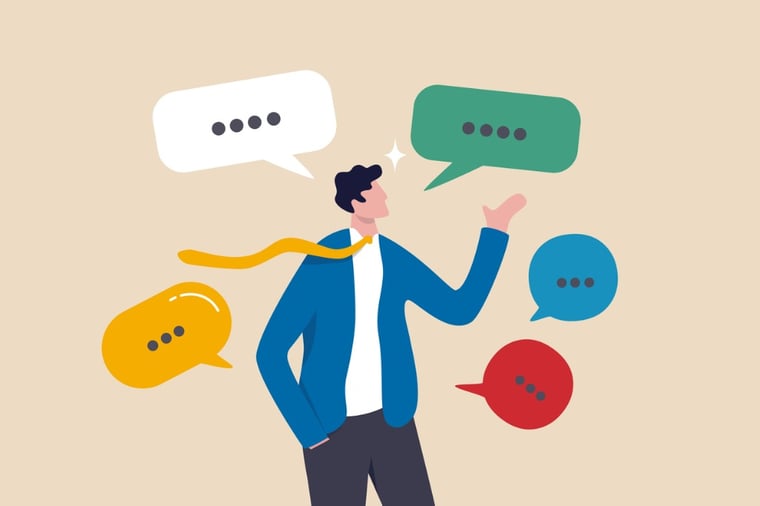
Marketing is fundamental to the success of almost every product or service in almost every industry. It’s one of the cornerstones of the free market. You have to be able to talk to an audience that will engage with you in order to create brand awareness, get customers, and make a profit.
But what if that market doesn’t speak English?
Sounds like a challenge. It’s one thing to translate operating documentation or contractual business forms for a tech, legal, or manufacturing company, but consider the kind of material involved in marketing. This is where creative ideas come to life that don’t always translate nicely from one culture to another.
At LinguaLinx, as a Language Services Provider (LSP), we help our clients through this fear so they come away with translations faithful to their original content. Let’s look at some of the top requirements that make for successful marketing translations.
Top Requirements for Marketing Translations
1. Consider Your Content
Very rarely is marketing material simply just text. It usually has imagery, audio, and/or video associated with it. All of this forms the message and sits inside some kind of print or digital wrapper, whether that be a website, social media post, or a good old-fashioned brochure.
Everything needs to be considered. Not just the words. Otherwise, you could end up facing the situation that baby food giant Gerber did when they went into semi-literate areas of Africa.
Pictures are what sell products in these regions, so marketing is very literal. A can of tuna has a tuna fish on the side. A can of carrots has carrots on the packaging. So, you can imagine what the locals thought when Gerber moved into their market with a baby food that had a baby on the jar.
What do you want to consider when looking at source content?
- Text – What language are you translating it into? How long is the language compared to English (German can be 35% longer than English)? Does it read right to left like Hebrew, or top to bottom like Chinese or Japanese? How will this affect your translation?
- Imagery – What’s the target country? What’s the language and the culture? Are your marketing efforts aimed at a Muslim region where you’d have to make sure that any imagery you use is appropriate to their customs on showing skin?
- Video and Audio – Is there moving-image content? Will you need to subtitle a video, translate text and then record voice overs for audio or video? If this material needs to be 100% authentic, are you in a position to recreate it from scratch with talent that is proficient in the target language?
2. Translators Should Have Industry Experience
There can be a misconception that translation is simply the process of transferring words from one language into another. When you think of how many words have two totally different meanings, the context that the word sits in is critically important in translation.
Marketing is no different; you have to know the industry and understand its jargon, acronyms, and language to deliver a truly accurate translation.
After all, in the industry, if you’re talking about an “evangelist”, that term doesn’t exist in all languages, and you probably want that translated as someone who loves your product or service and not as a preacher who tries to convert people to Christianity.
3. Get on Board with Technology
You should be working with an LSP that embraces what technology can do for you. Specifically, Artificial Intelligence (AI) driven machine translation (MT). This is where you get can tech working for you 24/7, 365 days a year if needed.
MT can do the economical heavy lifting, saving the higher-priced human intervention to check MT’s translations and fine-tune them with the post-editing process.
The key is to understand what content works well with MT. Even the marketing industry has areas where a lot of content may need to be translated (think archiving social or content marketing, for example) that won’t necessarily have a lot of exposure.
So, some translated material can have a first pass from a machine, some needs 100% human care, and some because this is marketing, needs to be conceptually created from scratch because a straightforward translation doesn’t get the intended message across.
That’s where you need…
4. Transcreation
Marketing concepts would sometimes die with a straight translation. Transcreation looks at what was meant by the original material and carefully nurtures it so that it can live in another culture with the intended meaning, if not the exact words of the source material.
When KFC launched their first restaurant in Beijing in 1987, opening up a potentially massive market for them, they stuck with their “Finger Lickin’ Good” slogan that they had been using since the 1950s. In Chinese, that translated to “Eat Your Fingers Off” which doesn’t really portray the concept behind the English slogan. What they needed to do was take the idea of “Finger Lickin’ Good” and adapt the idea into something that works in Chinese.
Actually, in the case of China, that’s not really good enough. In order to give your marketing content the best chance of survival in another language and another culture, wherever possible you should always…
5. Localize Your Content
Localization is all about the detail in understanding the country, community and culture you’re heading into. If you’re KFC, and you want to conquer the fast-food market in China, then you don’t just transcreate your slogan to become the Chinese equivalent of “Finger Lickin’ Good”, you understand that this idea needs to be localized.
Chinese people don’t consider licking fingers the sign of tasty food. So, even if the translation was accurate, it wouldn’t convey the same message in China. So in this case, even the idea behind the concept needed to be adjusted and localized.
6. Find Success with a LSP
The top requirement for marketing translations? Have the support to see everything beyond the translation.
Partner with a good LSP and they can guide you through getting the right linguists on board, understanding how to tackle different forms of media, use AI driven MT where possible and crucially, for the marketing world, know when transcreation and localization are needed.
Get A Quote For Your Marketing Translation Needs
If you’re in marketing and looking for a quote for a translation project, we’d love to sit down and talk with you about it.
Consultations are free and there’s no obligation.
With LinguaLinx, you won't ever have to worry about your message getting lost as it’s translated. You know you're in good hands as we’re ISO 17100 and ISO 9001 compliant, have over twenty years of professional translation experience, and have earned the trust of organizations around the world.






